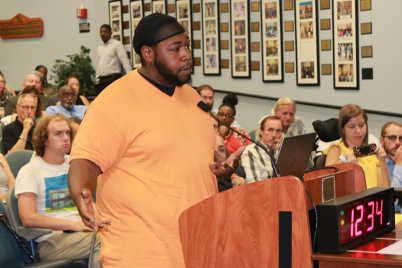City of St. Petersburg Community Affairs and Neighborhood Administrator James Corbett and other administrators sat down with the Tampa Bay Breakfast Club on July 7 to discuss the city’s proposal for how to use $34 million in American Rescue Plan Act (ARPA) and State and Local Fiscal Recovery Fund (SLFRF).
BY FRANK DROUZAS, Staff Writer
ST. PETERSBURG — The Tampa Bay Breakfast Club sat down with Community Affairs and Neighborhood Administrator James Corbett and other city administrators via Zoom on July 7 to discuss the city’s proposal for how to use $34 million in American Rescue Plan Act (ARPA) and State and Local Fiscal Recovery Fund (SLFRF).
“Anytime we get federal dollars, they always come with certain requirements and stipulations that we must meet certain objectives,” Corbett explained. “So just to give you some examples of some of the objectives that we were allowed to meet with ARPA dollars is we could replace lost revenue from the public sector. So essentially, the city’s lost income part of the ARPA dollars to be used to replace that lost revenue.”
The federal government allocated approximately $350 billion to state and local governments across the country, the City of St. Petersburg portion of that allocation is $45,413,871 that must be invested or encumbered by the end of Dec. 2024. If resources are encumbered in a capital project by Dec. 31, 2024, they must be spent by Dec. 31, 2026.
Of those funds, the city allocated $34,303,505 for housing affordability and support and $11,110,365 for health and social equity. In contrast, Clearwater has allocated only about $3 million for housing.
Corbett said that the federal government allows for a “standard allowance” of $10 million in revenue loss. These funds are transferred and treated as general fund money, so it’s no longer considered ARPA dollars and doesn’t have the same restrictions as ARPA funds.
“We could have essentially just let that $10 million sit in the city’s general fund balance or make up for any funds that were lost during the pandemic,” he said. “The administration has decided to invest $6.5 million into the Deuces Rising Townhome development, and $3.5 of that [$10 million] is going into the Housing Capital Improvement Fund.”
This fund is to invest in affordable housing to construct new units at 60 percent area median income. For the Deuces Rising Townhome Development project, construction is expected to begin in summer 2023 and be completed by summer 2024.

Theresa Jones, social services planning manager
Theresa Jones, social services planning manager, explained that $2.5 million had been allocated to Scattered-Site Family Shelter. The Society of St. Vincent de Paul provided a proposal to assist homeless families, she said.
“That means that they are not currently housed, not doubled up or living in hotels. These are individuals who are literally homeless and possibly staying in places that are not meant for human habitation. The proposal includes that they will shelter up to 25 families at any given time. They have to be from St. Petersburg, from specific Qualified Census Tracts, where they will select those families from what’s known as a coordinated entry system that is managed by the homeless leadership alliance staff.”
Those 25 families will be placed in temporary shelter in either hotel rooms or in what are known as master leases for apartments or houses, she said. The funds are being utilized not only to pay for the cost of the shelter but also for the staff assigned to provide case management to those individuals.
The need for shelter during the pandemic has dramatically increased, as there are currently 74 families on the waitlist for shelter in Pinellas County, with 44 of the families being from St. Pete. The rate of intake of families onto the waitlist is about 10 families per week. A housing specialist will be available to work with a family upon intake.
“We’ll have a capacity of no more than 25 families at any given time,” Jones said. “The program will be in place until Dec. 2024 or until the funds are expended.”
Stephanie Lampe, the senior housing development coordinator, explained that the Permanent Supportive Housing portion of the ARPA funds is basically to assist low-income households with supportive services, case management, and wraparound services, which are a significant component of helping people to either stay in their existing housing or to obtain new housing.
“For this funding, we issued an RFP [Request for Proposal] in March of 2022, and the contract was awarded [this past May], and basically they’ll be assisting 75 participants annually with service support plans and helping the tenants with items like transportation links to transportation, assistance with employment and training, and maybe some landlord mediation,” she said. “But it’s all to help the very low-income households to retain or obtain their housing.”
For multi-family, affordable and workforce housing investments, there is $24 million set aside — $20 million for affordable multi-family, $3.5 for TBD housing — and $500,000 for administrative expenses. The housing investments will focus on 60 percent AMI and below.
“What this funding does,” Corbett said, “we are assisting developers to build medium to large multi-family developments, but we are requiring them to restrict the cost of the rent or the income of the occupants, and we’re placing that restriction for a long-term. In these proposals that we recently received, there is no one that’s going to have a term less than 30 years, so that’s guaranteed affordability for the next 30 years or longer!”








